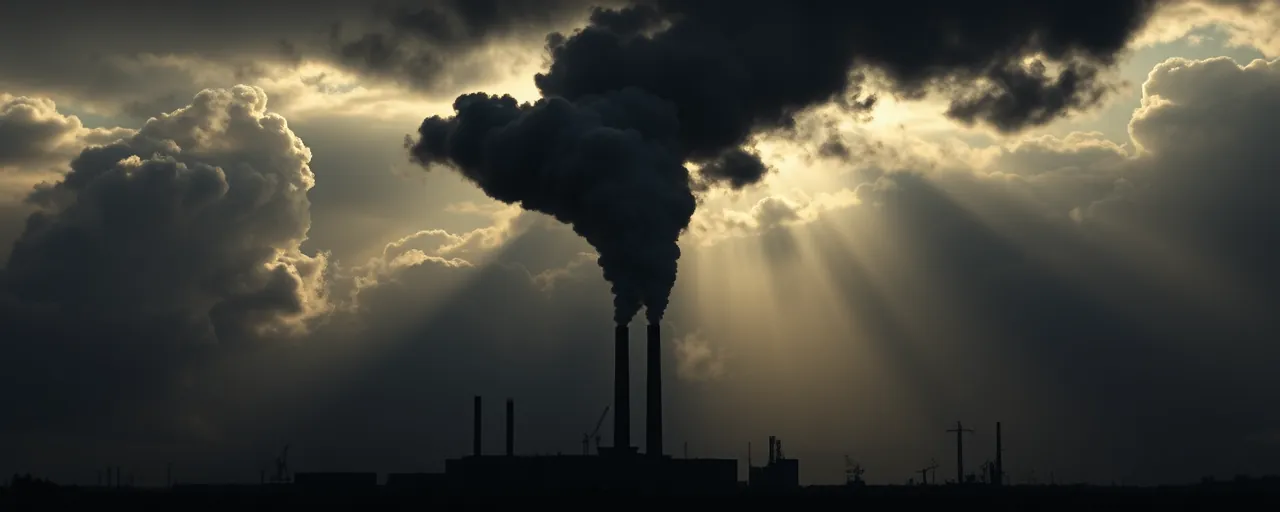A Costly Verdict in Eugene
In a Eugene, Oregon courtroom, a federal judge delivered a sharp rebuke to two companies operating the J.H. Baxter wood treatment facility and their president, Georgia Baxter-Krause. The companies faced a $1.5 million fine for illegally handling hazardous waste and violating air pollution regulations. Baxter-Krause, held accountable for misleading regulators, received a 90-day prison sentence and a year of supervised release. The ruling, announced on April 22, 2025, underscores the tangible consequences of environmental noncompliance.
The case centers on the J.H. Baxter facility, a wood treatment plant long embedded in Eugene’s industrial landscape. For years, the facility processed hazardous chemicals to preserve wood, generating wastewater that required careful management. When regulators uncovered improper practices, the case exposed not only operational failures but also broader questions about how industries balance profit with public safety.
Residents living near the facility, just across the street from homes, have voiced concerns about the health risks posed by the plant’s emissions. The sentencing has sparked a renewed conversation about the impact of industrial activities on local communities and the role of enforcement in protecting vulnerable populations.
Unlawful Practices Under Scrutiny
Court documents reveal that J.H. Baxter’s violations stemmed from a deliberate practice of ‘boiling off’ hazardous wastewater in wood treatment retorts, a process used on 136 known days between January and October 2019. This method, which lacked the required permits under the Resource Conservation and Recovery Act, reduced wastewater volume but released pollutants into the air, breaching Clean Air Act standards designed to limit hazardous emissions.
Employees were instructed to open vents during this process, allowing toxic substances to escape directly into the surrounding environment. After Oregon inspectors raised questions, Baxter-Krause provided inaccurate information about the dates and equipment involved, despite knowing the company maintained detailed logs of the activity. These actions triggered a joint investigation by the Environmental Protection Agency, the Oregon Department of Environmental Quality, and other agencies.
The case reflects a broader pattern of enforcement actions targeting hazardous waste and air pollution violations. In 2024, the EPA resolved thousands of such cases, securing over $1.7 billion in penalties and reducing millions of pounds of pollution. The J.H. Baxter case, though smaller in scale, highlights the persistent challenge of ensuring compliance at industrial facilities.
Weighing Corporate Accountability
The sentencing of both the J.H. Baxter companies and their president signals a growing emphasis on holding corporate leaders personally accountable. Legal experts note that prosecuting individuals, not just companies, can deter misconduct more effectively. Baxter-Krause’s 90-day sentence, while modest compared to some high-profile cases, sends a clear message: executives cannot hide behind corporate structures when their actions harm the public.
Globally, accountability mechanisms are tightening. The European Union’s 2024 Environmental Crime Directive, for instance, imposes hefty fines and holds corporate officers liable for environmental failures. In the U.S., cases like the $4.5 billion penalty against BP for the Deepwater Horizon spill illustrate the financial and reputational stakes. Yet, some argue that fines and short sentences fall short of addressing systemic issues, pointing to the need for stronger preventive measures and corporate culture reforms.
Community advocates in Eugene have called for greater transparency and stricter oversight of industrial operations. They argue that fines, while significant, do little to undo the health and environmental toll on neighborhoods near facilities like J.H. Baxter. These voices underscore the tension between punishing violations and ensuring long-term protections for affected communities.
Health Risks in Focus
The public health implications of J.H. Baxter’s actions are hard to ignore. Industrial air pollution, including fine particulate matter, is linked to serious conditions like heart disease, lung cancer, and respiratory illnesses. A 2021 global study estimated that air pollution caused 8.1 million deaths, with industrial sources playing a significant role. In the U.S., communities near plants face elevated risks, particularly for children and the elderly.
Eugene’s case resonates with environmental justice concerns, as low-income and minority communities often bear the brunt of industrial pollution. Although federal priorities have shifted away from initiatives like Justice40 in 2025, the EPA continues to fund air monitoring and technical assistance in overburdened areas. Local residents, aware of these disparities, are pushing for stronger safeguards to prevent future violations.
Regulatory successes, such as plant closures and emission controls, have reduced pollution-related mortality in recent decades. Yet, the J.H. Baxter case serves as a reminder that gaps in compliance can expose communities to ongoing risks, raising questions about how to balance industrial activity with public well-being.
Looking Ahead
The J.H. Baxter sentencing closes one chapter but opens another for Eugene and similar communities. The $1.5 million fine and probation terms aim to deter future violations, while Baxter-Krause’s prison sentence reinforces individual accountability. Still, the case leaves lingering concerns about the adequacy of oversight and the long-term health impacts on residents.
As industries face mounting pressure to align with environmental and ethical standards, the path forward hinges on robust enforcement, transparent practices, and community engagement. For now, Eugene’s residents are left grappling with the consequences of past failures, hopeful that stronger protections will shield them from harm in the years ahead.
